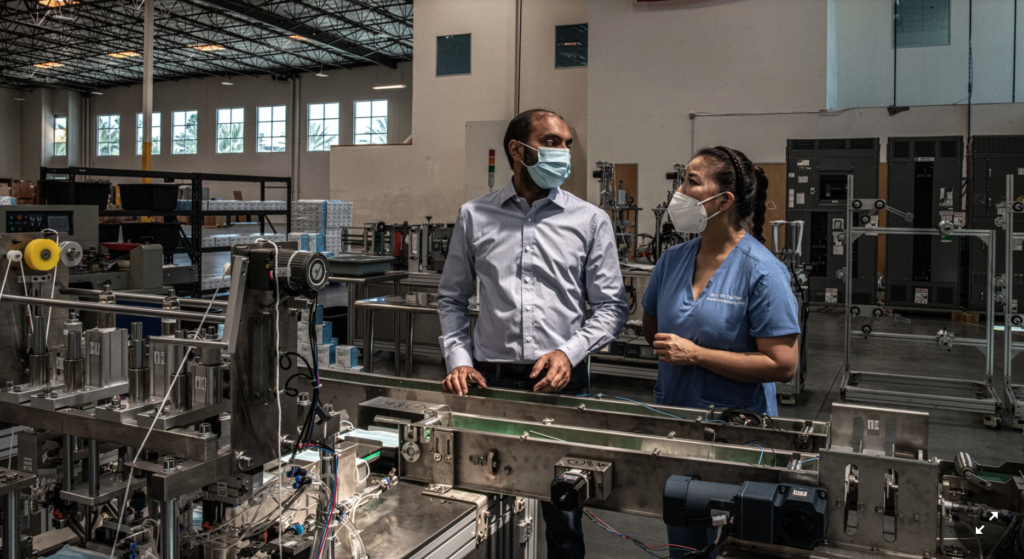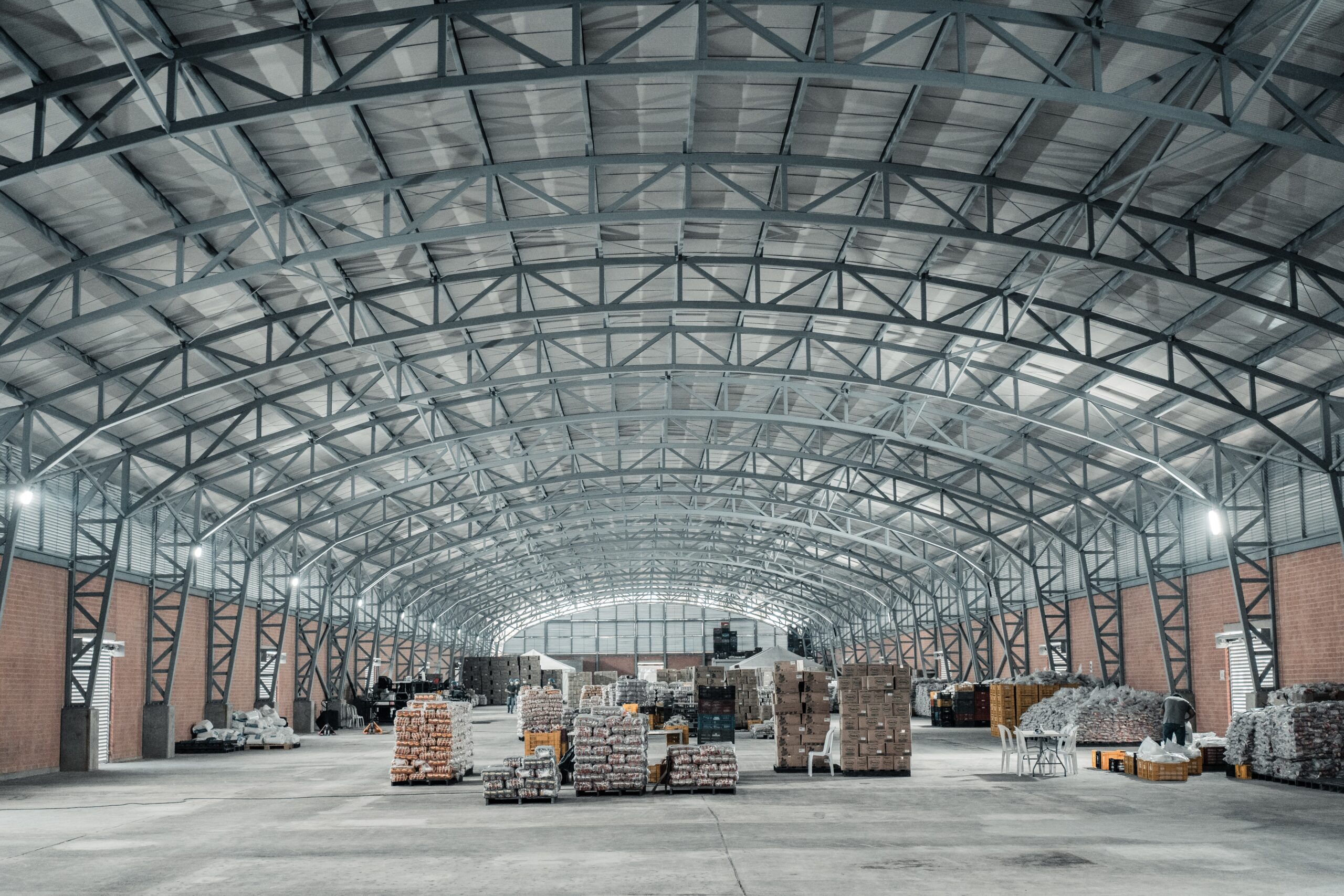Lessons learned from failures during COVID-19 include not relying on a single supplier overseas and finding ones that are closer to their customers, experts say.
One of the most illuminating business lessons of the COVID-19 pandemic is that supply chains were caught off guard. While experts say no level of preparedness is capable of handling a pandemic like this one, US supply chains could have been much more resilient and flexible.
That said, well before President Trump enacted the Defense Production Act, there were numerous examples of companies that made the shift from manufacturing their core products to helping produce personal protective equipment (PPE) almost seamlessly, thanks to advanced supply chains.

There’s no doubt supply chains remain the lifeblood of global commerce, but for the many companies unprepared when COVID-19 hit, experts say more work needs to be done to restart economic activity.
“We need to go back to a commonsense approach and treat supply chains for products essential to our security and welfare seriously,” said Tinglong Dai, associate professor of operations management and business analytics at Johns Hopkins University.
At the same time, “supply chains that had experienced significant digital transformation before the pandemic seem to be more resilient,” said Dai, who is also a member of the Institute for Operations Research and the Management Sciences (INFORMS).
Back to the USA
One telling sign of change is from a recent survey by Thomas, which found that over half of manufacturers are “likely to extremely likely” to bring production and sourcing back to North America. Additionally, 47% of US manufacturers report they are now seeking domestic sources of supply.
In contrast, a few months back, over 80% of PPE was coming from China—in about a 300 mile radius of Wuhan, China, where the pandemic is believed to have started, according to Thomas President and CEO Tony Uphoff. Not many people in the healthcare industry realized where equipment was being sourced from; they just took it for granted they would be able to get it when they needed it, he said.
“Organizations and hospitals didn’t even know [China] was ground zero of that supply chain, so here was the perfect storm of a major supply chain of critically needed equipment that was at the epicenter of the virus. That was an aha moment, and we see that at the state and federal levels; we’re reeling from this,” Uphoff said.
When parts of China were locked down, that stopped an enormous supply of PPE equipment from being manufactured, he said.
“That was the first trigger event and then, when the virus spread and other parts of the world were locked down you saw the equivalent thing happening” with other supply chains due to a lack of raw materials available, he said. “When people say, ‘the supply chain broke down,’ the most dramatic example would be in PPE equipment,” Uphoff said.
Rakesh Tammabattula, the CEO of QYK Brands, and manufactures essential PPE products, agrees with Uphoff. Tammabattula said his company is close to not having enough alcohol to continue production of hand sanitizer.
“The challenge with the supply chain for hand sanitizers that we are currently facing is … the shortage in sourcing any raw material from alcohol to necessary chemical compounds and plastic bottles and pumps,” Tammabattula said. “The shortages have been caused by the overnight surge in demand and the domestic manufacturers not having enough supply to meet the demand nor the capability to produce for the demand.”
Almost all manufacturers of plastic bottles are outside the US and the disruptions in logistics because of the shutdown have made it very challenging to consistently package products and fulfill orders in a timely manner, he added.
To address these issues, QYK Brands has taken a number of steps, including using alternative forms of bottles and dispensers and changing the formulas it uses to ethyl alcohol in place of isopropyl and alternate stabilizing agents, Tammabattula said.
“We have also started working with several other companies outside our normal supply chain to secure raw materials from non-traditional sources, even though the volumes of supply are much lower than our regular supply,” he said. The company has also started working with plants outside the US that have better access to raw materials to fulfill the need, he said.
In the near term, US manufacturers still have to rely on overseas suppliers, said Dai. “Moving forward, however, the trend is pretty clear. Business leaders will face unprecedented pressure from policymakers, consumers, and shareholders to truly harden their global supply chains against shocks as a result of climate change, geopolitical upheavals, and pandemics.”
This will mean more near-sourcing—bringing operations closer to where customers are, Dai said. Another positive result, he said, is that “as they make such transitions, businesses will probably be able to finally reduce their emissions and [will] take climate change seriously.”
Industry 4.0 will see a significant level of reshoring of manufacturing back to North America, agreed Uphoff. The pandemic has accelerated this, even among companies that haven’t seen their supply chains disrupted, he said.
“They’re looking at secondary or tertiary suppliers and thinking maybe it’s the right time to have something a little closer to their customers in North America,” including Mexico, which Uphoff said will become “the new China,” as well as Canada and the US. “The old NAFTA will be a huge beneficiary of this,” he said.
China will not go away as a manufacturing power, Uphoff added, but expect to see “a shifting of the global manufacturing industry that’s probably going to impact every economy over the next decade, at least.”
The impetus for the reshoring in the past few years is due to more competitive pricing, Uphoff said. Echoing Dai, he said companies are also factoring in the ability to manufacture closer to where their customers are, which means a reduction in shipping costs.
“If I’m a smart, nimble company, I perhaps have a second and third supplier,” he noted, not to reduce capabilities but to spread out the business so that if one goes down capacity can be shifted, “so you don’t put all your eggs in one basket.”
The pandemic has also served as a wake-up call to companies to be more aware of their supply chains than they used to be, he added. Looking ahead, he said there will be more real-time management of supply chains and 24/7 monitoring with video cameras.
Advocating for better supply chain security
Meanwhile, the Telecommunications Industry Association, which represents manufacturers and suppliers of high-tech communications networks, announced it is creating a single global standard to secure the supply chain for the information communications technology (ICT) industry.
TIA CEO David Stehlin saidICT supply chains are at a greater risk than ever because there is no verifiable and transparent assessment program to ensure the providers of components, products, and systems are trustworthy.
“We need to be doing all we can to minimize exposure to cyberattacks that threaten to endanger national security, disrupt critical infrastructure, and impede economic growth,” Stehlin said. “The pandemic only re-enforces this need as, in the future, we will certainly rely on our communications networks more heavily than we did before the impact of COVID-19.”
Security in the supply chain includes not only cybersecurity but also protection from counterfeit and pirated components, he added.
“Our approach to supply chain security recommends building security checks and measures into the process rather than bolting them on later…we believe this element is critical to success in this area.”
Start planning now
The biggest challenge Uphoff sees ahead for US manufacturing is a skills shortage. “Last year, 284,000 new jobs were created in US manufacturing,” he said. Pre-COVID-19, there were about 750,000 open jobs, but Uphoff believes that while those numbers might move around, “the fundamental concepts haven’t changed.”
He has two pieces of advice. “Step one is every company in the world…that relies on supply chains needs to do a thorough risk analysis and wholesale evaluation of their supply chains,” Uphoff said. This includes having transparency into how secure the supply chain is and knowing where all the components are coming from.
Step two is to evaluate options, and consider whether there are secondary suppliers to work with closer to customers for better efficiencies and to save money.
Tammabattula agrees. “The model of the supply chains has to shift from centralized to a more distributed and redundant where we are not relying completely on one single or major source but instead working with multiple smaller but efficient sources,” he said. “Emphasis on domestic manufacturing is key to solving this long term.”
For now, businesses remain in a “super fluid situation” and many are facing existential threats,” said Dai. Survival has become a top priority for many businesses, and this is a time in which many companies may be tempted to cut their investments in AI and digital transformation, he added.
“However, they should resist temptation and invest in shaping their future supply chains that are mandated to be more flexible and resilient,” Dai said. “AI and digital transformation can help many businesses mitigate current operating challenges, as well as thrive in a post-pandemic world. COVID-19 will not be the last test to our supply chains. As virtually all business activities are frozen, it may be a good time to get ready for the future.”
By Esther Shein
(This article was first published in TechRepublic on April 21, 2020.)

